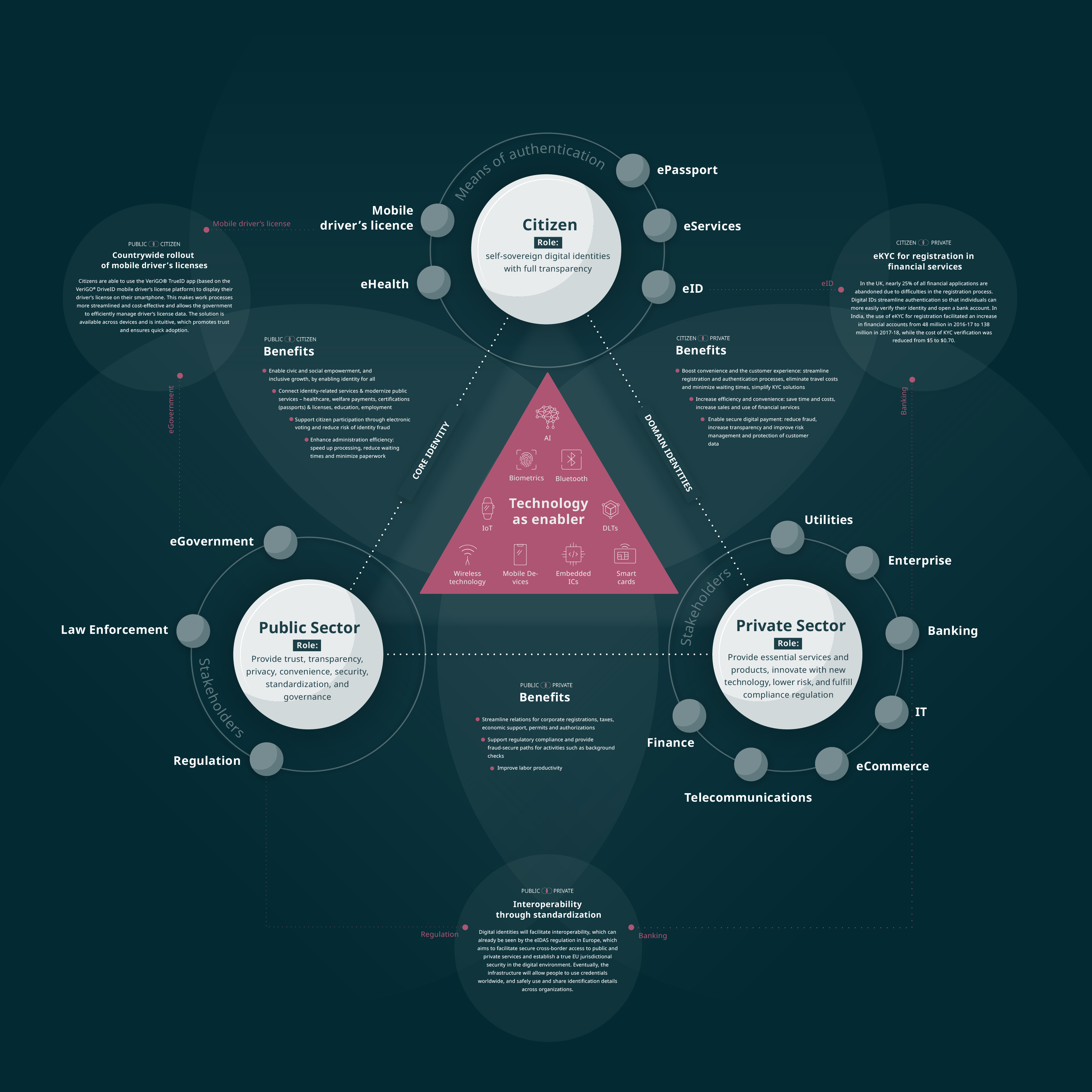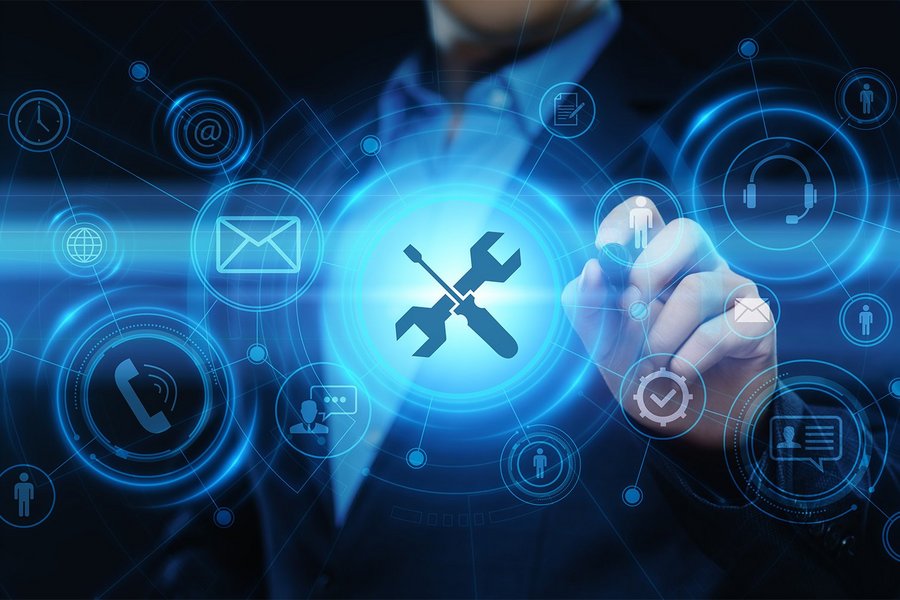Click through the infographic of the digital identity ecosystem to view the current and future advantages of eGovernment services.

What is a digital identity ecosystem?
Secure digital identities require a trust mechanism involving multiple parties, innovative technology, and numerous use cases. This can also be referred to as a digital identity ecosystem. From streamlined authentication to simplified payment transaction, here are the major benefits of digital identities for consumers, public authorities and private players.

One’s identity develops over time through experiences, education, and interactions with schools, banks, and businesses. Identities are necessary to verify who you are or to prove certain attributes – for example, to prove your credit rating to a bank, to confirm you are over the legal age to buy alcohol from a liquor store, or to verify to a police officer that you are in a particular class of drivers allowed to drive a certain type of vehicle. A digital identity is simply a set of validated digital attributes and credentials for the digital world, serving to uniquely identify a person both online and offline.
As technology continues to improve, internet and mobile usage increases, and implementation costs decline, digital identities are becoming more viable and common across the world. COVID-19 has radically accelerated the trend as digital solutions and remote services and ways of working become the new norm. However, 1.5 billion people around the world still don’t own an identity. This means they are unable to participate in government services, gain access to healthcare, get loans from the bank or purchase a mobile phone contract. Essentially, they can’t build up a life.
The UN and World Bank ID4D initiatives aim to provide everyone on the planet with legal identity by 2030.1 Digital identities will be crucial to overcoming current barriers and helping emerging economies to leapfrog paper-based approaches to identification and provide everyone with a legal digital identity. According to research from the McKinsey Global Institute, countries implementing digital ID could unlock value equivalent to 3% to 13% of GDP by 2030.2
An integrated ID system
Digital identities automate processes to make them more streamlined and seamless, enabling people to undertake identification services remotely or more conveniently on digital devices, such as mobile phones. The transition to smart cities makes a future without physical keys, public transport tickets, or highway tollbooths within reach.
Such Be-In/Be-Out (BIBO) systems and aggregated information will allow everything to become seamless and connected. Digital identities will play a crucial role in such a future, enabling mobile authentication and registration, eHealth and ePassports, and the ability to eSign official digital documents and secure shared resources. This would facilitate speedier and more convenient processes in our everyday lives.
Players, technology, and means of authentication
A digital identity ecosystem involves different parties to create a trust mechanism. The user should be at the center of this ecosystem and be able to follow a secure journey for each occasion using a digital identity. Such processes are enabled by a range of cutting-edge technology, such as biometrics, smart cards, blockchain, and the Internet of Things (IoT).
At the bare minimum, this ecosystem requires someone who holds an identity, a party that creates or manages the identity, and a relying party (a player that relies on the identity, such as the police or a bank). Crucially, this ecosystem requires collaboration among citizens, the public sector, and the private sector. Such collaboration and integration allows all players within the ecosystem to reap a myriad of benefits, ranging from reduced costs to increased civic participation.
Published: 23/03/2021


